QX50, QX60, carry Nissan from here to Infiniti
Filed under: Weekly test drives, Autos
By John Gilbert
If Nissan decided to produce a book on its engineering, it might call it “From Here to Infiniti.” That would put Infiniti, Nissan’s upscale brand, front and center, which would be appropriate, because Infiniti seems to get first crack at all of Nissan’s considerable engine-building ventures.
For example, Infiniti has a whole posse of SUVs, identified by the letters “QX,” as opposed to its stable of cars, which are all designated by “G” and then a number. The SUVs range from the compact QX30, to the QX50, QX60 and QX80 at the excessively large end.
I recently had the chance to spend a week with the excessively sleek QX50, which might have lifted itself to my favorite status among all the Nissan/Infiniti SUVs. I’m not overlooking the smaller — some might say cramped — QX30, but the QX50 is roomier and armed with a couple of special assets I like a lot.
A month or so before my winter test week with the QX50, I also drove the QX60, which is larger and an excellent choice if you want or need a third row of seating for stowing kids or relatives or neighbors. At $48,150, the QX60 is only a couple thousand more expensive than the $46,100 QX50, until you load up with options. The sticker on the QX60 zoomed up to $61,930, although those options turned the interior from efficient to opulent in short order.
Comparatively, the QX50 topped out at $49,630 and wasn’t nearly as feature-filled as the QX60, but I wouldn’t need the third-row seat and I could think of a few options for the $1,200 difference. Both vehicles have LED lights and all the connectivity functions.
Both the QX50 and QX60 are sleekly styled and sporty, with the Infiniti corporate grille adorning both. The QX50 is lower, making it appear sleeker, and more sporty because of that stance. Read more
Ford ‘Escapes’ from mundane SUV compacts
Filed under: Weekly test drives, Autos

Snow, cold, and the climate of Lake Superior’s North Shore can make you want to escape, and the new Escape is the right vehicle.
By John Gilbert
Sly move, Ford. I capitulate in my questioning of the logic of Ford to not only quit building almost all of its sedans, but to announce it, alerting consumers that maybe they don’t want to risk buying a car that’s going out of existence.
The main reason for my yielding is the 2020 Ford Escape, which is the latest version of the compact SUV that helped trigger our country’s sweeping upsurge to the preference of trucks and SUVs over sedans. While granting that most buyers of SUVs and compact SUVs will stress that they want to be seated a little higher to aid in traffic visibility — and clucking at the certainty that the sightline advantage is pretty well eliminated when you stop at a crowded intersection and notice that 29 out of 30 cars in your field of vision are also SUVs — the new Escape comes very close to merging the best assets of a car and SUV.
We’re all pretty accustomed to the slightly boxy Escape during its formative years and later development, but the new model is much sleeker, much more stylish, and nobody can utter the criticism of it being boxy. There is a definite movement toward sportier and more stylish compact SUVs, with Mercedes, Infiniti, Lexus, and BMW leading the way with lofty standards of styling and technology. The two standards of the segment are the Honda CR-V and the Toyota RAV4, and even they have grown more rounded and stylish, although nowhere near the new Escape’s bold venture.
Ford also has taken an adventurous step in powertrains, leaving its U.S. competitors behind by being first to downsize its engines for fuel economy, and turbocharging them under the heading “EcoBoost” to jack up their power and performance. Others are following now, but Ford put the standard out there and keeps adding refinement.
The test vehicle was the Escape SE Sport AWD Hybrid, which encompasses a lot of technology under those rakish lines. The base Escape now is available with a 1.5-liter 3-cylinder turbo, an engine that is surprisingly capable with its 181 horsepower and 190 foot-pounds of torque, especially in the front-wheel-drive model. Next up, there is a 2.0-liter turbo that has 250 horsepower and 280 foot-pounds of torque that powers the Titanium all-wheel drive model from 0-60 in less than 7 seconds — nearly two seconds quicker than the others. Read more
Kia deepens its Soul with GT turbo flair
Filed under: Weekly test drives, Autos
By John Gilbert
The 2020 KIA Soul introduces the third generation of the squarish compact sedan, and it is no longer just for fun. It is still plenty enjoyable to drive, and amazingly useful to store stuff in, but after starting life as a bit of a departure, it now has become a staple for the South Korean manufacturer.
When I got the chance to test-drive a 2020 KIA Soul, I was happy to see it was a GT-Line model, in stunning Inferno Red, which is pretty red-orange, and comes pretty well loaded with all the sportiest equipment KIA can put on it. The company logo, by the way, shows “KIA” spelled out in all capital letters, but most folks spell it “Kia,” so we ca sort of alternate, and feel safe.
To new Soul leaves less question. It rides on an all-new platform, something the first two generations never enjoyed, and the GT-Line comes with the standard 2.0-liter 4-cylinder replaced by the smaller but more potent 1.6-liter turbocharged 4. The base Soul has the corporate 2.0-liter 4, without a turbo, and has a fully adequate 147 horsepower and 132 foot-pounds of torque, but taking the smaller 1.6 with a turbocharger, the Soul has 201 horsepower and 195 foot-pounds of torque.
The much of an increase in torque is a huge launch benefit, but beyond the numbers, the peak of 195 foot-pounds comes in at a mere 1,500 RPMs, barely above idle speed, compared to the 4,500 revs it takes the normally aspirated 2.0 to reach torque peak.
The front-wheel-drive compact has a new exterior, too, with a businesslike slacked out grille and LED-underlined headlights, while the rear’s flat facade is highlighted by center-mounted exhaust pipes.
You are surprised that the new Soul has such quickness, with its 7-speed dual-clutch automatic handling the power, and giving you steering wheel paddles if you want to control the shifts manually. Also, that it handles and corners with such firm suspension, but you are more impressed with the interior amenities. For example, the steering wheel lives up to the “GT” phrase, with a comfortably padded leather wrap also getting a flat-bottomed design that gives you a bit more thigh room when entering or exiting. It also has all sorts of remote switches to control audio, cell phone remote, and cruise control.
The seats are supportive buckets, with contrasting red stitching, and the large and wide navigation screen gives you all pertinent information. The floor shifter is joined by a console, and assorted other switches for driving mode and other assets.
All the safety elements are included, too, such as front collision warning and assist, lane keeping assist, adjustable driving mode, and all the connectivity you could want on a contemporary car. I’m not sure if the lesser Soul models have all the same features, and if not, it would be a logical reason the price rises from the low-$20,000 range to $28,710 — the tester’s sticker tally.
Kia, and its corporate partner Hyundai, have made a meteoric rise in quality and design over the past decade, but after joining up with its powerful and successful partner Hyundai, it pretty well paralleled Hyundai, model for model. The Soul was a departure then, because while both companies have neat compacts, Kia got its Soul and there was no parallel version with a Hyundai logo.
American drivers and car-buyers used to be a lot more square, apparently. Remember when Nissan came out with a little square car called the Cube, just about the same time Kia came out with a little square car called the Soul? Even Toyota came out with a square subcompact under its Scion sub-brand, designated by an easily-forgotten combination of large and small letters, while Ford created the Flex, a considerably larger but square vehicle, in keeping with the tradition of U.S. cars being bigger.
The Flex is almost a station wagon/van trucklet, the whole Scion group disappeared, and while the quirky little Cube went away, the Soul remained. The irony of the whole thing is that Kia designed the Soul almost as a novelty, a fun car for younger buyers as a departure from a group of stylish sedans and SUVs. My opinion is that the Soul, too, might have disappeared from the automotive landscape if it weren’t for the hamsters.
Yes, the hamsters. Remember them?
When the first Soul was introduced, the public relations staff showed the assembled media videos of a new ad campaign, showing a couple of cartoon hamsters bopping along in a Solo, heads nodding to the music from the potent sound system. There were two or three different ones, and we all loved them. They became a staple on television commercials for the Soul. The large stuffed hamsters were a cult hit, maybe more than the car itself, but at auto shows and on commercials, the two were interwoven.
Kia public relations folks apologized for using the hamsters, which always puzzled me. Why not flaunt them? But after a couple of years, the hamsters went away, but they had provided the Soul itself with enough marketing traction to go onward and upward, selling much better than even the most optimistic Kia official could have imagined.
I had been invited to attend the introduction of the first Soul, down in Miami. We happened to stay at a neat hotel just off the most populous areas, When I went up to my room on a higher floor of the hotel, I walked along the corridor with a couple of security guards, and we exchanged small talk until I got to my door. When I went to leave a short time later, I was surprised to see the same two security guards two doors down, sitting on folding chairs. Again, we exchanged comments, and I left. At lunch, someone mentioned to me that there was heightened security all around the hotel to prevent photographers from bothering Britney Spears, who was also staying at that hotel, hoping to be secluded while performing a couple of concerts in Miami.
It hit me then that she must be staying next door to me, which was the reason for the guards. The next day we went for our introductory drives in the new Soul, and when we returned in late afternoon, security was more heightened. Nobody was allowed in or out, but I was allowed to go up the elevator to my room to change. Returning to the lobby, I spotted Britney Spears, reclining on a lounge chair by the pool with her infant son and a couple of attendants. I only had a few seconds to snap a couple of photos with my trusty pocket camera, and then we went off for dinner.
Such adventures can leave a lasting impression, and if KIA was not about to incorporate Britney Spears into the Soul’s promotion, it at least could have kept the hamsters. The original Soul was well-suited to any driving requirements in the Miami area, and the new one has advanced enough to be only a small adjustment away from taking care of the challenges of a Northern Minnesota winter.
About the only criticism you might have is that the boxy shape does an effective job of catching the wind, and crosswinds makes you appreciate the vehicle’s stability even while you can hear some wind buffeting. And, I would recommend some top-flight winter tires if you were going to try to make it through a snow-belt winter. The stock, low-profile tires on the test-car’s 18-inch alloy wheels were eager to spin on any icy incline, and a set of Nokians would allow you to frolic through any winter situation.
Explorer ST goes to new lengths for 2020
Filed under: Weekly test drives, Autos
By John Gilbert
The SUV craze may come and go — although as we head into 2020 it looks like it has come to stay — but as names and shapes and sizes fluctuate, there will always be an Explorer.
Ford sells Explorers the way other companies can only dream about, and for 2020, the Explorer takes a large leap forward.
There are various Explorer models in the 2020 lineup, including a hybrid, and a so-called base 4-cylinder model, with all sorts of trim options up to the loaded Platinum maximum. The one that caught my eye at first, however, is the sporty ST model, and by good fortune, that is the one I got for my fkirst road test of the new Explorer.
If theres was a perfect time for examining how the new Explorer might cope with wintertime on the North Shore of Lake Superior, this has been the year for it. One report said that snowfall through mid-January is normally 30 inches, and this winter it was 70 inches.
To handle such challenges all the Explorers for 2020 ride on a new platform that is significantly different from the 2019 face-lifted version of the popular midsize SUV. Foremost is that the Explorer now rides on a platform that is rear-drive oriented, while all previous Explorers were on a front-wheel-drive platform. The new platform is long enough to house three rows of seats inside its 199.3-inch overall length, and it has a wider stance of 78.9 inches to better plant the vehicle, with the clear benefit to the spacious interior.
The ST has assorted sporty touches, such as the twin chrome exhaust tips on either side of the rear end, and four pipes should be enough to extract all the exhaust from the 3.0-liter V6, which is twin-turbocharged to run away from the very swift standard-issue Explorers, such as the XLT with its potent 300-horsepower/310-foot-pound 2.3-liter Ecoboost 4. The ST’s new 3.0 has a whopping 400 horsepower and 415 foot-pounds of torque.
That’s enough to send the Explorer ST from 0-60 miles per hour in a mere 5.3 seconds, and it can reach 100 in a quarter-mile dash in about 14 seconds. The base four-cylinder reaches 60 in a very respectable sub-7-second run, which is good for a vehicle of this size, but is left behind when the ST, despite 4,860 pounds, makes its run.

Roomy enough for optional third-row seats, and added storage, the Explorer also features 4-pipe exhaust on sporty ST model.
The ST is not just for show and sportiness. It does not shirk its work capability with a 5,000-pound towing weight, or its people-hauling requirements..
Part of the enjoyment of evaluating new vehicles is trying to guess at the reasoning behind the changes, or what might be coming next. I figure the Explorer has grown in size to take care of those folks who want a third-row seat, and also to make room for an all-new Escape, just out for 2020, and if moving the Explorer up a bit closer to the Expedition, it leaves more room for the Escape — and for the return of the Bronco to Ford’s stable. as an all-new SUV with an old name.
The Explorer has the refined compromise of being bigger and roomier but not handling bigger. It has a performance suspension package that lets it corner sharply and you can play with the settings with a knob on the console that goes from economy to normal to sport, and the sport setting works to tighten steering and firm up the suspension.
On the outside, short overhangs front and rear make for an interesting design and enhances any off-roading you might want or need to do. And the 21-inch alloy wheels — black on the ST — respond well to the urgings of the 10-speed automatic transmission, which shifts often and smoothly, but which also can hold its shifts if you’re in sport.
The Explorer ranges in price from $37,000 up to the ST test vehicle’s stiff tag of $59,520, and while you can find numerous midsize SUVs for that or less, you have to experience the new Explorer to realize it feels like it can compete with larger and costlier SUVs. And, without question, the bulk of that money’s-worth is on the inside, where creature comforts surround you in every way in ST trim.
The leather bucket seats, with contrast stitching, are firm and comfortable, with buckets in the front and second rows that are heated. Rumor has it that the fronts are also cooled, although in January in Northern Minnesota, that’s one of those features you don’t bother testing. The spaciousness of the front seats becomes remarkable in the second row, where the seats have plenty of legroom.
The neat part is that at the push of a button, you can make the seat slide fore and aft, and the backrest folds down at another touch. The height of the second row buckets gives them room to fold out of the way for entry to the third row bench seat, which works, although might be reserved for kids or small adults. Of course that third row seat folds down, and enlarges the storage space under the hatch.
Back up front, the driver gets both serviced and entertained from the cockpit-style layout. A large, horizontal instrument cluster greets you as you enter with a beautiful and artistic vision of mountains and billowing clouds in the sky, and, if it’s late enough, a gigantic moon is rising from out of the mist. Of course it changes over to serious business when you start the car with the push-button located on the horizontal space between the console and the dashboard.
Then you check the navigation screen for information, and be prepared: At 10.3 inches, that vertical screen is about the size of an iPad, and it loaded itself up with information, including the normal audio or climate control settings. When you shift into reverse, you not only get the direct rear-facing camera shot of where you’re heading, but you also get the overhead 360-degree view of the vehicle — complete with a darkened area that indicates you have the ST package’s double-size sunroof, which Ford calls a moonroof.
The high-tech B&O audio system is also something special, sending lots of sounds to 14 speakers in the ST, and the separation of sounds from those speakers puts this whole system up with the highest level of vehicle audio.
Living in the snow belt gives you some special needs, and the Explorer ST handles them all with safety features including park assist, automatic LED headlights that cut through the snowflakes in a storm and turn night into virtual day. A small feature is the capless gas filler. When it’s below zero, and you’re at the gas pump, you plug in your credit card, grab the nozzle, flip the filler door open, and just stick in the nozzle without taking off your other glove to unscrew a cap.
My wife, Joan, liked everything about the Explorer ST, but if she had to pick a favorite item, it might be that while standing in the kitchen, looking out at the Explorer parked 100 feet away, under the result of an overnight snowstorm, you just hit the key fob to watch its lights blink and the remote starter firing up that engine. Take a few minutes to bundle up for the short walk, and the Explorer is warmed up, seat-heater and defroster already warm, and you’re all set to go to work, to the mall, or to go…Exploring.
Polished 2020 G70 gives Hyundai a step-up sedan
Filed under: Weekly test drives, Autos
By John Gilbert
U.S. car buyers have completely converted their attention from traditional sedans to SUVs, trucks and crossovers at such a pace that it’s futile for companies to keep making those old-fashioned conveyances. We all know that.
Or do we? Hyundai begs to differ, despite the overwhelming shift in sales figures and profit, the South Korean giant has presented us with vehicles like the 2020 G70, under the newly separated Genesis luxury line. What are they thinking?
Sales numbers show that even the most stalwart cars, like the Camry, Accord, and Civic, have been displaced by SUVs like the RAV4 and the CR-V, which are now the leading sellers for Toyota and Honda, respectively. Same with Nissan, where the compact Rogue SUV is the top selloer. So convinced are car-makers that giants such as Ford and General Motors have halted production of a lot of cars that used to carry their colors into annual sales competition.
And then there’s Hyundai, which has zoomed up to the top echelon in technology, safety and popularity to become a giant in automotives, over the last 10 years. And while Hyundai seems to be in a hurry to get to the top, it is not so much in a hurry to give up on cars. Sedans, even. Hyundai, in partnership with KIA, continues to reach higher into the hallowed ground of SUVs, but they also continue to make very impressive sedans. And they’re reaching for more.
For 2019, Hyundai introduced the Genesis G70, a 4-door sedan version of its flashy coupe, and at the most reasonable end of the three cars — G70, G80, and G90 — with which it has endowed its new and separate high-end Genesis brand. As a brand new model, the G70 surprised many in the industry by being named Car of the Year. KIA had come out with the highly successful Stinger a year earlier, so the platform was there, and Hyundai shortened it to more compact dimensions, and filled it up with elements that are aimed at luxury and sportiness, and achieved that hard-to-achieve combination.
Up on Lake Superior’s North Shore, outside of Duluth, Minnesota, we got an early start on our winter-that-never-ends season where drivers had to contend with heavy snow and cold long before 2019 ended, so I was pleased to get a week-long test drive in a Genesis G70, and it was the loaded G70 AWD 3.3T Sport, which gets your attention immediately, with a sticker price of $53,245.
That strikes you as a lot for a company that started out, and climbed, by building economy cars, then economical cars, adding style, then luxury, then sport, but keeping the sticker price far less than you’d assume, for all you’re getting. Turns out, the new G70 does exactly that, punching above its weight class by far, considering it starts with a base price of $46,650, and is a very impressive entry-luxury car at that price.
Once you drive the car — particularly after a blizzard hits — you appreciate all it offers and how much attention has been paid to make you comfortable and secure, while also holding the hammer of high performance. A turbocharged V6 with 365 horsepower and 376 foot-pounds of torque, delivered through a superb all-wheel-drive system, offers plenty of performance in a sleek, BMW-esque shape.
The usual high-end Hyundai technology is everywhere, including the outstanding lane-departure and lane-centering devices, all the connectivity you could want, simple execution of top-end luxury, and style — along with the high-grade steel placed strategically throughout the platform.
Real-world luxury starts with the Nappa leather bucket seats that are heated front and rear and offer support and comfortable firmness. And it goes right on through the head-up display of redundant information in the driver’s line of vision and to the brilliantly lighted outside, with LED headlights, taillights and daytime running lights. The headlights have auto-dimming, naturally, because the test car came equipped with all the standard equipment as well as the Elite package, with adaptive lighting, parking sensors and parking assist, plus the Prestige package, and the Sport package. with the surround video screen monitor, quilted Nappa leather seats and head-up display, and the Sport package, with 19-inch black alloy wheels, electronic suspension, and the dark chrome grille.
The wheels are larger than standard, and measure 225-40 19 front and 255/35 19 rear — just so you won’t be tempted to do the easy seasonal front-to-rear swap. Is that necessary? Not sure, but I often accuse designers and engineers of successfully avoiding the need to buy after-market tires or they wouldn’t add such complexities to car ownership.
The powertrain is a gem, with the 3.3-liter V6, twin turbocharged to send 365 horsepower and a whopping 376 foot-pounds of torque to all four wheels. An 8-speed automatic governs the power to all four wheels, which is something you appreciate mostly in Winter driving when “winter” is spelled with a capital W. The transmission shifts smoothly all the way from 1 through 8, and can be manually overridden by paddles on the steering wheel to execute the rev-matching shifts.
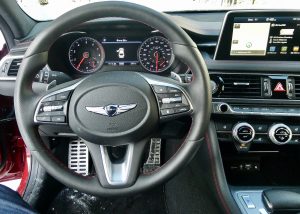
Assorted switches on steering wheel, including shift paddles, are efficient and ergonomically sound.
All that power makes the G70 a kick to drive, although it never feels like a hot rod, maybe because of all the luxurious accoutrements and computer gadgetry. But get on it hard and you find it has plenty of punch that complements its insistence on staying firmly planted in cornering, and smooth at freeway speed.
The twin turbos make it easy to get on it hard, and difficult to get on it easy, so the EPA estimates of 17 city and 25 highway usually flank what you’re actually attaining. I didn’t get the G70 out on the freeway for any kind of trip, so I can’t say that we ever cruised at 25 miles per gallon or more, but it was easy to get 23 or 24 in city driving, which makes me believe you could get close to 30 with sustained cruising and mellow throttle usage.
The G70 is not the luxury liner the G90 is, but it does have all the luxury anyone could seek, and it’s a sporty luxury combined with crisp handling and that potent power, which gives it a sporty edge that most luxury cars don’t strive for. Plus, all the electronic gadgetry works well and efficiently, satisfying the desires of the technocrats. All those things working in harmony puts the G70 on a plane that would require comparison shoppers to check the BMW lineup, or Audi or Mercedes, but German, for sure.
Hyundai didn’t earn the right to have its new G70 mentioned in the same sentence with BMW, but it has earned that status by remaining committed to building cars, from the subcompact Accent to the compact Elantra and extremely slick midsize Sonata, and on up to the Genesis models. The company is not being overly bold, but it has maintained the belief that sedans are not going away.
While buying into the profit margins of SUVs, at Hyundai they believe that it may be cyclical, and while many SUV buyers are happy with their purchases, they may prefer to revisit the sedan market once they revisit the varieties for their second vehicle, where the right sedan might beat having two SUVs.
If that happens, and plenty of market research indicates it well could, a good number of those buyers might want a sedan that is a cut above others in features, luxury or sportiness. And with the G70, Hyundai already has a proven winner at a price tag that is not all that expensive, after all.



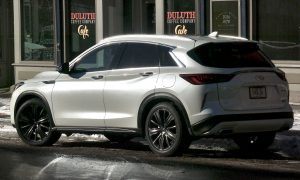
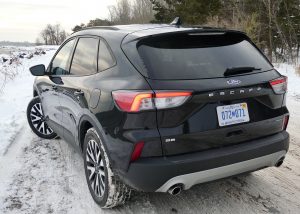
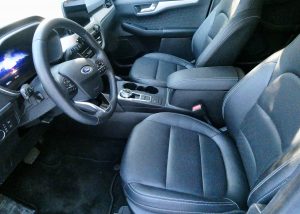

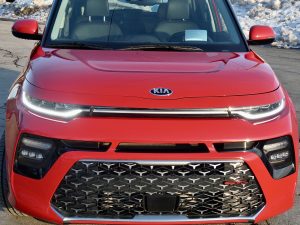
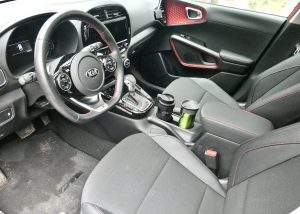



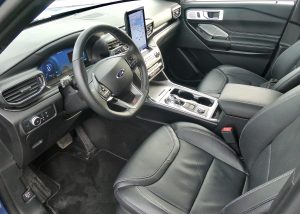
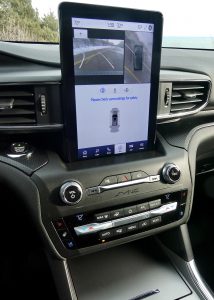
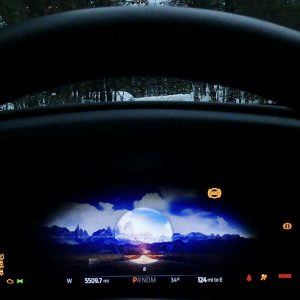



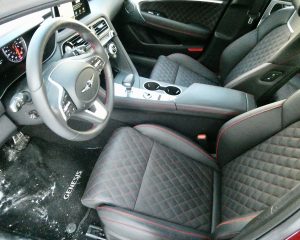

 John Gilbert is a lifetime Minnesotan and career journalist, specializing in cars and sports during and since spending 30 years at the Minneapolis Tribune, now the Star Tribune. More recently, he has continued translating the high-tech world of autos and sharing his passionate insights as a freelance writer/photographer/broadcaster. A member of the prestigious North American Car and Truck of the Year jury since 1993. John can be heard Monday-Friday from 9-11am on 610 KDAL(www.kdal610.com) on the "John Gilbert Show," and writes a column in the Duluth Reader.
John Gilbert is a lifetime Minnesotan and career journalist, specializing in cars and sports during and since spending 30 years at the Minneapolis Tribune, now the Star Tribune. More recently, he has continued translating the high-tech world of autos and sharing his passionate insights as a freelance writer/photographer/broadcaster. A member of the prestigious North American Car and Truck of the Year jury since 1993. John can be heard Monday-Friday from 9-11am on 610 KDAL(www.kdal610.com) on the "John Gilbert Show," and writes a column in the Duluth Reader.